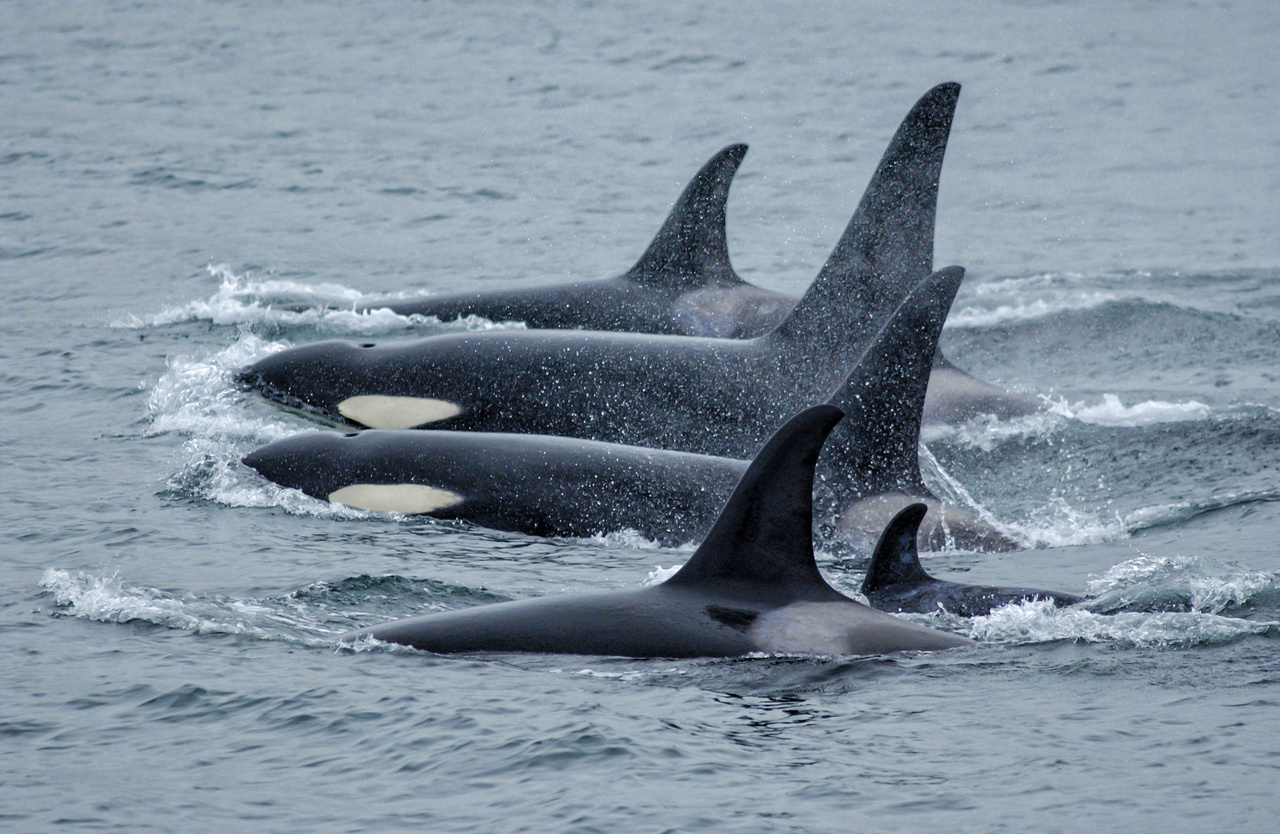As sea ice off Arctic Alaska retreats, orcas are staying in the region longer
The predators could have a big impact on key subsistence species such as bowhead whales.

Researchers tracking orcas in Alaska’s waters with acoustic tools have found more evidence that the whales are moving into the Arctic — and staying there longer as sea ice retreats.
“It’s not necessarily that killer whales haven’t been reported in these areas before, but that they appear to be remaining in the area for longer periods of time,” said Brynn Kimber, a University of Washington scientist, in a press release. “This is likely in response to a longer open water season.”
Kimber presented the findings at a conference of the Acoustical Society of America in Seattle last week.
The predator’s increased presence in the Arctic could have significant impacts on the region’s marine ecosystems.
Previous studies have already found that orcas, also known as killer whales, were increasingly hunting in Arctic waters where they were previously rare or nonexistent.
Inupiat whalers on Alaska’s North Slope have been reporting seeing orca-inflicted wounds on bowhead whales for some time, observations that were also confirmed in a subsequent study published last year.
Elsewhere in the Arctic, orcas have also expanded their range north. In Canada, they’ve hunted narwhal and beluga, which — like bowhead in Alaska — are sometimes deprived of the refuge of sea ice. Orca that were hunting in Canada’s Hudson Bay have also been trapped and killed by returning sea ice.
While it’s not yet clear what impact the orcas’ presence will have in Alaska’s Arctic, there are some hints that it could be extensive, reports E&E News, citing a study that a population of about 160 orcas could kill more than a thousand narwhals in a year.
Narwhals, like bowheads and beluga, are key sources of food for Indigenous communities in the Arctic.